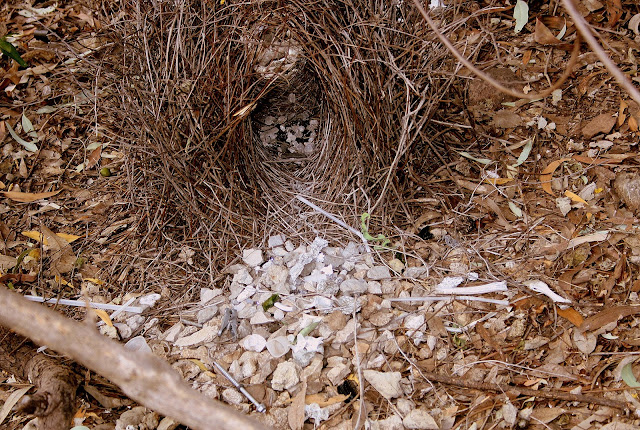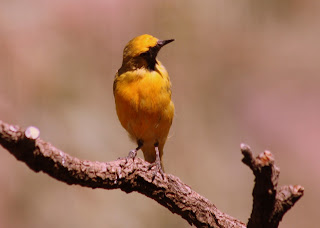A mere 105 Km north from Mataranka brings us the the first "civilisation" we have seen for some time - that is if you quantify a city with a Coffee Club, a Subway, a Maccas and an actual hardware store as "civilisation".
It is nice to be able to buy consistently good coffee and be provided with pleasant surroundings to drink it.
The view through the windows of the Coffee Club brings us back to earth, , hey we're not in the Blue Mountains anymore !! Massive triple road trains roll through the main drag and, of course, that's just normal here, no-one even notices!
There's a very high percentage of 4WD vehicles as you would expect and lots and lots of grey nomads in a wide assortment of caravans and other recreational vehicles.
The view through the windows of the Coffee Club brings us back to earth, , hey we're not in the Blue Mountains anymore !! Massive triple road trains roll through the main drag and, of course, that's just normal here, no-one even notices!
There's a very high percentage of 4WD vehicles as you would expect and lots and lots of grey nomads in a wide assortment of caravans and other recreational vehicles.
There is a heavy vehicle bypass to the main drag, but that does not seem to stop triples rolling through town
Katherine definitely relies on tourism and it is clearly a happening place that is really taking advantage of its natural assets. The city's parks and gardens are reasonably well looked after and well presented, history is well promoted with an excellent museum and, of course, there's the gorge
Katherine Gorge / Nitmiluk is the standout attraction and most visitors take a cruise as we have done on the last two times we have visited. This time we just visited the gorge, spent some time at the interpretive centre, had a very nice lunch and chased some birds around the bush.
CHASING BIRDS AGAIN
We were fortunate to find a bower of the Great Bower Bird complete with a resident that I took to be a juvenile or, more probably a female. They stand around 35 Cm high.The male Great Bower Bird has a lilac coloured rosette shaped crest just behind his head (called a nuchal crest says he reading from the bird book !!) when displaying, and this bird did not have that.
A Great Bower Bird at Katherine Gorge / Nitmiluk looking a little alarmed that I am checking out the bower
Our resident Satin Bower Bird at home in the Lower Blue Mountains collected blue objects - pegs, milk bottle caps, straws, blue plastic and lots of pieces of all sorts of blue stuff.
This Great Bower Bird collects light coloured objects - stones, straws, pieces of glass and all sorts of white stuff including (if you look in the bottom of the picture slightly left of centre) a four inch (or so) silver screw!
The bower of a Great Bower Bird.
It is within and adjacent to the bower that the male entertains females by performing an elaborate song and dance routine. The females are enticed to the area by the displayed objects. Many males spend hours arranging and the re-arranging items in the bower. I have seen Satin Bower Birds add freshly collected flowers and leaves that are then changed on a daily basis just to impress the female.
When it is considered that the only tools available for building the bower are the bird's beak and feet /claws, it's an impressive construction and display job.
THE GHAN
I have always had a fascination for trains and, living not far away from the main western rail line through the mountains I see many. I have also been fortunate enough to ride in a number of locos over the years
I have been trying to get up close to the Ghan since our first trip around in 2008 and something always went wrong - the train was early or late, or I was just in the wrong place at the wrong time.
This time I nailed it in Katherine.
The Ghan stops in Katherine for four hours or so so that passengers can do a quick trip around town and do a quick cruise on the gorge, so I did a little exploring and came up with a good site for a pic or two - from a level crossing just as the train had crossed the Katherine river.
Recognising a train tragic, the loco driver gave me quite a few blasts of the horn as well !!
I didn't get to count the cars, but there were a lot.
The Ghan crossing the Katherine River Bridge
THIS BLOG
When I worked in the features section of a major newspaper a few years ago you could tell if we were short of editorial material, the number one sign? big pictures, few words!
This blog is a clear demonstration of that !!
We are heading to Kakadu and then to Darwin, so I expect to have lots of pictures to show you in the next blog, lots of birds and, hopefully, lots of crocodiles.
till next time,
Regards
TJ
We are heading to Kakadu and then to Darwin, so I expect to have lots of pictures to show you in the next blog, lots of birds and, hopefully, lots of crocodiles.
till next time,
Regards
TJ
bjkhbjkbjnjk







































